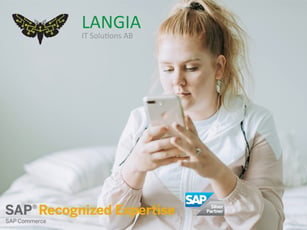Manufacturer E-Commerce: 8 Essential Questions for Best Results
Manufacturers are increasingly exploring new ways to reach consumers directly, leveraging the power of digital commerce to expand their market reach. Launching a direct-to-consumer (D2C) or business-to-business-to-consumer (B2B2C) channel isn’t just about setting up a webstore—it’s about rethinking business processes and creating new ones to ensure success. Here are eight critical questions manufacturers should consider on their e-commerce journey.
- Who is Your Target Customer?
Understanding your target customer for the new digital channel is paramount. These customers may have different attributes and requirements compared to your traditional customer base. Dive deep into their preferences, purchasing behaviour, and pain points. Are they looking for convenience, competitive pricing, or perhaps a wider product selection? By identifying these factors, you can tailor your e-commerce platform to meet their specific needs.
Consider the demographic and psychographic profiles of your target audience. Are they tech-savvy millennials, busy professionals, or perhaps retirees looking for easy online shopping experiences? Each segment will have unique needs and expectations, which your platform must address to attract and retain customers.
- What Value Does the New Digital Channel Bring?
Determining the value of your new digital channel involves generating new revenue streams and minimising expenses through digital means. Ask yourself:
- How will this new channel attract new customers or upsell to existing ones?
- Can it reduce costs through automation and improved efficiency?
These value drivers will shape your e-commerce strategy, guiding decisions on investments and expected returns. Additionally, consider how the new channel can enhance customer loyalty through personalised experiences, exclusive online offers, and seamless service.
- What Modifications to the Business Are Necessary?
Launching a manufacturer's e-commerce platform isn’t merely about deploying new software. It necessitates significant changes in business processes. Treat the new channel as a full-fledged business that demands proper management, not just a technological add-on. Assess your current operations and identify areas needing overhaul, from inventory management to customer service.
For instance, your sales and marketing teams may need to adopt new strategies and tools tailored for digital channels. Your customer service team might require training to handle online inquiries efficiently. Moreover, integrating the e-commerce platform with existing enterprise systems like ERP and CRM can streamline operations and provide a holistic view of the business.
- Are You Ready to Manage a New E-Commerce Channel?
While established organisations may possess the technical know-how to launch an e-commerce channel, the real challenge lies in managing the operational impacts. Evaluate how the new channel will affect existing processes, staff roles, and resource allocation. Preparation and planning are key to ensuring a smooth integration with your existing business model.
It’s essential to set up a dedicated team to oversee the e-commerce operations, including roles such as an e-commerce manager, digital marketing specialist, and IT support. This team will ensure that the platform runs smoothly and can quickly address any issues that arise.
- Which Products Are Most Suitable for the Channel?
Not all products are equally suited for e-commerce. Consider factors such as:
- Brand impact and risk
- Alignment with digital sales
- Customer demand and digital proficiency
- Potential for channel competition
By carefully selecting the right products, you can maximise the channel’s effectiveness and ensure it meets customer expectations. Start with a pilot phase, featuring a limited product range, and gradually expand based on customer feedback and sales performance. This approach allows you to test the waters without overwhelming your operations.
- Will Your Product Line Fulfil Customer Demands?
To achieve a successful launch, your product line must meet the demands of your target customer segment. A comprehensive product offering that addresses their needs is crucial. Otherwise, you risk low adoption rates and a poor return on investment due to a negative first impression, which can be difficult to overcome.
Analyse market trends and customer preferences to curate a product line that resonates with your audience. Consider offering exclusive online-only products or bundles that provide added value. Additionally, ensure that your inventory management system is robust enough to handle the new channel’s demands, avoiding stockouts or overstock situations.
- How Will You Handle Fulfilment and Logistics?
Meeting customer expectations for delivery times is critical. Ensure you have efficient inventory visibility and a reliable order-tracking system. Consider outsourcing some or all of your delivery logistics to expedite the launch and enhance service quality. Reliable logistics are the backbone of a successful e-commerce operation, ensuring customer satisfaction and repeat business.
Investing in a state-of-the-art fulfilment system can streamline your logistics processes.
Automation technologies such as warehouse management systems (WMS) and automated picking systems can significantly improve efficiency. Partnering with reputable third-party logistics providers (3PLs) can also offer flexibility and scalability as your e-commerce operations grow.
- How Will You Promote Your Brand While Avoiding Channel Competition?
If you already have existing sales channels, such as dealer networks, it’s essential to navigate potential channel conflicts carefully. Conflicting promotions can arise when multiple channels are marketed simultaneously. Develop a strategy that promotes your new e-commerce site without undermining your existing channels. Clear communication and strategic planning are vital to maintaining a harmonious multi-channel approach.
Utilise a coordinated marketing strategy that clearly delineates the unique benefits of each channel. Offer exclusive online promotions that don’t compete directly with your other channels. Regular communication with your dealer network can also help alleviate any concerns and ensure that all stakeholders are aligned with the new strategy.
Expanding the Customer Experience
To truly excel in the e-commerce space, manufacturers need to offer an exceptional customer experience. This goes beyond the basics of a functional website. It includes personalisation, where the shopping experience is tailored to individual customer preferences. Utilising data analytics and AI can help in providing personalised recommendations, targeted promotions, and customised content.
Another critical aspect is providing excellent customer service. Implement live chat features, robust FAQ sections, and easy-to-navigate support options. Ensuring that customers can quickly find help and resolve issues will enhance their overall shopping experience and build loyalty.
Staying competitive in the e-commerce landscape requires embracing the latest technologies and innovations. Manufacturers should explore opportunities in mobile commerce, social commerce, and even emerging technologies like augmented reality (AR) and virtual reality (VR) to enhance the shopping experience.
For example, AR can allow customers to visualise products in their own space before making a purchase, significantly enhancing the buying decision process. VR can create immersive shopping experiences that set your brand apart from competitors. Keeping an eye on technological trends and being agile enough to adopt relevant innovations can give your e-commerce platform a significant competitive edge.
Launching a manufacturer's e-commerce platform is a complex but rewarding endeavour. By addressing these eight questions, you can develop a comprehensive strategy that not only meets but exceeds customer expectations. At Langia IT Solutions, we specialise in creating personalised omnichannel experiences using SAP Commerce Cloud. Our leading SAP Commerce experts, many of whom have a background with SAP or Hybris itself ensure excellent quality in our delivery and have experience from major international end customers and projects. Contact us to learn more about how we can help you stay competitive in the evolving digital marketplace.


.jpg?width=408&height=230&name=Blog%20Banner%20(1).jpg)